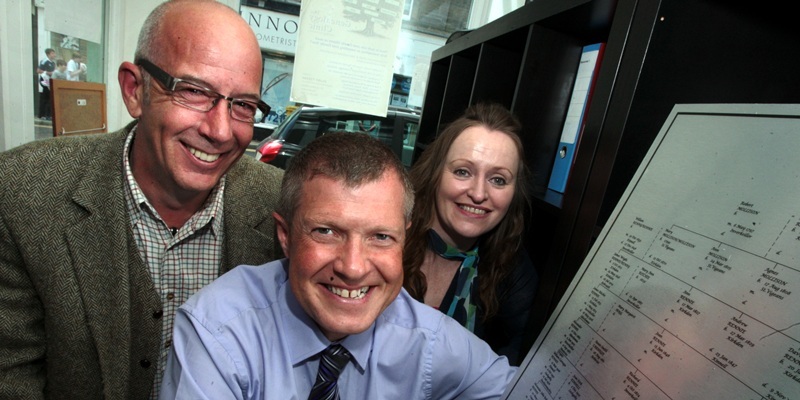It’s every politician’s worst nightmare.
Some stranger decides to have a good rummage around in your family’s closet to see what skeletons can be unearthed. But an investigation into Scottish Lib Dem leader Willie Rennie’s potentially-murky past has failed to find any dastardly derring do in his family tree.
The Mid Scotland and Fife MSP had the Rennie or Renny or Renney, depending on the registrar family researched by Dunfermline’s Genealogy Club, run by Lloyd Pitcairn and Debbie McLean.
Pitcairn Research have been in the business of tracking family and probate genealogy for well over 40 years. They decided to look into Mr Rennie’s past, having created a family tree for Pars legend Jim Leishman.
“We decided to try and look at local people who would be of interest to the public,” explained Debbie.
Using a huge number of resources, they have a very high success rate in locating the genealogy of families in Scotland, tailoring their research to individual requirements and budgets. Having dug into Mr Rennie’s family history they might not have found any black sheep, but they did come up with some interesting results.
Starting in the mid-1700s, they traced his family line through six generations, ending with his own children, and discovered Mr Rennie comes from a family of pavement dressers, master butchers, agricultural workers and Strathmiglo grocers with the odd Glasgow spirit salesman thrown in for good measure.
There’s even the wife of a toll collector Mary Rennie married William Cothill and lived in the toll house.
At the dawn of the age of photography, Mr Rennie has an ancestor, William Nicol Renny, who was a professional photographer in the 1880s and 1890s with premises in Perth’s George Street and Keptie Street in Arbroath.
Originating in the north-east of Scotland, there were several pavement dressers who would have hewn rock from quarries and helped create much of the urban landscape of Edinburgh, laying kerbstones and installing fascias.
“For example, take his great-grandfather Alexander,” said Lloyd. “He was a pavement dresser, which might not sound particularly exciting, but from Inverkeillor he would take quality stone from the quarries and paved Edinburgh with it.
“It was a real skill, and forms the Edinburgh we still know to this day.”
In a family where longevity was also pronounced, Mr Rennie’s grandfather William’s birth was also unusual. Born in 1906, he was one of three triplet boys with Gilbert and James who all survived until a ripe old age.
“That is pretty amazing,” added Lloyd. “We are not taking about them being born in Edinburgh or Glasgow where the family could at least get some medical attendance, we are taking about being born in a rural area, where probably everyone relied on a local woman to help with the birth.
“There would have been very little medical attention at all so for her to have three healthy boys who all survived is very rare.”
The politician remembered his grandfather and two brothers and |recounted that Gilbert had been badly burned while using a newspaper to “draw” a fire. He was delighted with the project and probably more than a little relieved there were no villains hiding in the branches of his tree.
His tale of Gilbert demonstrated, said Debbie and Lloyd, that the family tree is the “skeleton” and it was family history and anecdotes and the backdrop of Scotland’s rich history which put flesh on its bones.
